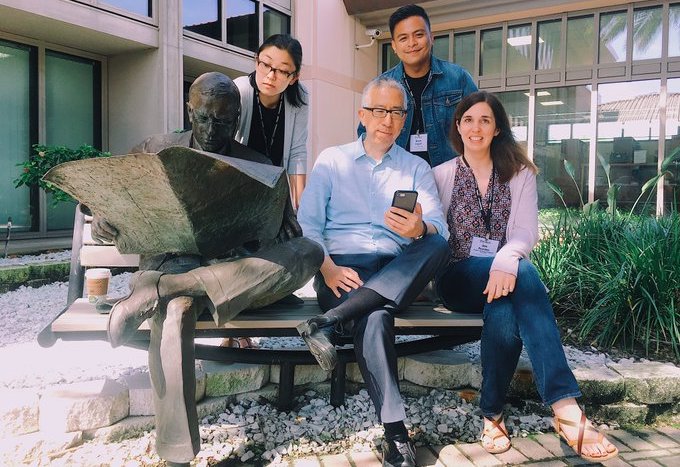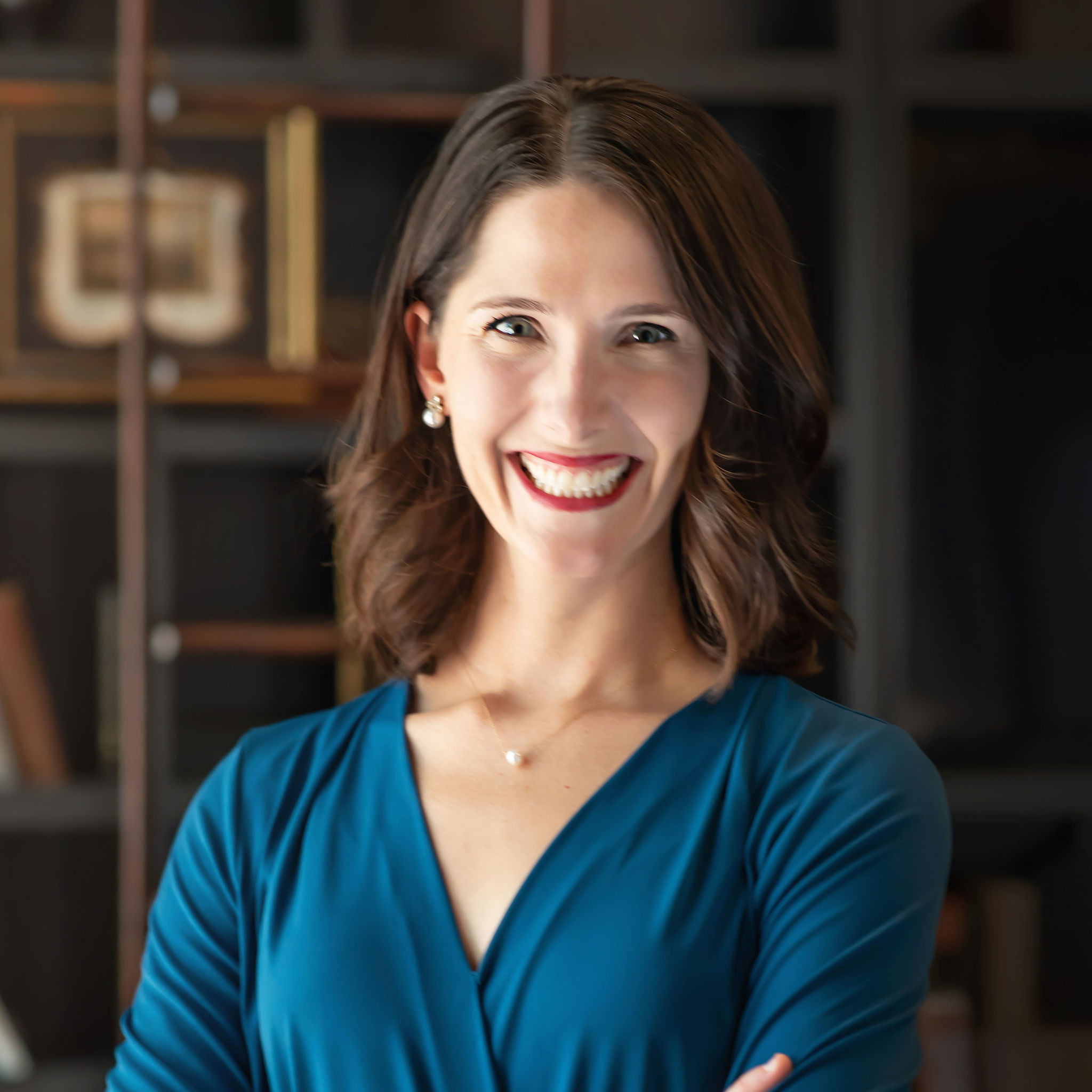This article has been updated to reflect the current program dates.
The word “summiteer” may bring to mind a mountaintop, backpacking gear and that victorious arms-to-the-sky power pose. At Poynter, that moniker appropriately refers to the 100+ graduates of our annual Summit for Reporters and Editors. “Summiteer” captures the elation of accomplishment and the clear-eyed perspective from reaching new heights that participants gain through the program.
Poynter’s Summit for Reporters and Editors is back on the calendar for 2022, with online sessions scheduled for July 7, July 14-16 and July 22-23. I caught up with longtime seminar director and assistant managing editor for journalism initiatives at The Dallas Morning News, Tom Huang, to learn what’s new with the popular program. Ahead of the June 17 application deadline, we talk about dealing with isolation, viewing journalism as a craft and translating the Poynter “magic” to virtual spaces.
Mel: The world seems so different now than it did in 2019 when we last held this program in person. How will things be different during the online Summit?
Tom: The seminar is still laser-focused on the craft of journalism, including boosting skills in reporting, writing and editing. I’ve recruited the country’s best journalists, including Jacqui Banaszynski, Maria Carrillo and Kat McGrory, to teach in the seminar.
More than ever, in these challenging times, reporters and editors are hungry to sharpen their craft skills, regardless of their beat or platform, regardless of whether they are in local news or a national organization.
Because of the national reckoning on racial and social justice, I’ve added the opportunity to have conversations about diversity, equity and inclusion. And because many journalists are experiencing burnout from the relentless pace of the news, I’ve added a conversation about mental health and trauma, and what newsrooms can do to better support their journalists.
In this period of isolation, I also know how important one-on-one coaching can be. So we’re committed to providing each Summiteer with coaching from our faculty.
RELATED NEWSLETTER: The Collective, a monthly newsletter for journalists of color, by journalists of color. Subscribe today.
Mel: How have you adapted the design of the program for an online environment?
Tom: Because we’ve been living in a Zoom world for the past two years, we know how fatiguing it can be to be glued to a screen and on video calls for several hours. That’s why I’ve condensed the sessions, so that most of them are 60 minutes max, with a few essential sessions at 90 minutes.
I’ve also designed the Summit so that each day’s lessons are no more than four hours total, and I’ve segmented the seminar into an introductory session on July 7, and then two segments — July 14-16 and July 22-23 — with a few days’ break in between.
Mel: One of the key characteristics to this Summit in recent years was the separate tracks: one for editors, one for reporters. Now, there’s much more overlap. I suspect that mirrors what’s actually going on in newsrooms now. What benefits do you think you’ll see from this structure?
Tom: When I originally designed the Summit a few years ago, I created two tracks — one to serve reporters, the other to serve editors. But the more the faculty and I taught the seminar over the years, the more we realized that reporters and editors could learn from one another while in one group. So we eventually began to collapse the two tracks into one.
I think that makes sense, because both reporters and editors need to understand how to brainstorm story ideas, find the heart of their stories, conduct effective interviews and structure more in-depth storytelling.
Reporters benefit from learning how to do more self-editing, as well as how to coach others across their newsroom. And many newsrooms now have hybrid positions, where the journalists may do a combination of reporting, writing and editing.
The benefits to this structure: Reporters and editors will develop a common language and learn how to talk to one another about the craft of journalism — and how to build better stories.
Mel: Tom, you’re one of Poynter’s most effective, popular instructors. I’m always blown away by the feedback I read after your programs, including the Power of Diverse Voices and the Summit, where people say their experience fundamentally changed the way they approach work. What happens during your programs that doesn’t happen at other training programs?
Tom: Well, the amazing thing is most of Poynter’s seminars are transformative, and the things I know about organizing and teaching these seminars — I learned all of these things from Poynter faculty members who shared their generosity and wisdom with me over many years.
One of my first goals in any seminar is to help the journalists see that there is a higher purpose to our work — and we’re teaching them skills that will help them find that purpose and do more impactful journalism. And in doing so, help others and maybe even improve our society.
We also want these journalists to see that we have this tremendous opportunity during the seminar to get to know one another and learn from one another. It’s not just the instructors who teach; the participants share their wisdom, and the instructors learn.
Another goal of mine is to build a community. Journalism can be lonely work, especially during this isolating pandemic. So I want the Summiteers to realize that they are not alone. The faculty and I build this sense of community through the classes, through Facebook groups and, before the pandemic, through group dinners and social hours. That’s harder in the virtual world, but we still work hard to build in those interactions.
Since I’m an editor who still works in the trenches, in a metro newsroom, I know first-hand the harsh challenges that journalists face every day. So I make sure that I tailor our teaching and our conversations around the realities of the newsroom. And I also know how important support and empathy are these days, so I lean into encouraging others, to reenergize these journalists and renew their faith.
As someone who attended several Poynter seminars in the early 2000s, I’m always trying to achieve what we used to call the “Poynter magic.” Maybe we still call it that. But it’s the idea that, as a participant, when you invest your time and energy in the seminar, you gain clarity, and your life changes, and you go back into the world a better person and a better journalist. I know that sounds metaphysical, but it’s true.
Mel: What are some of the key skills you think participants will take with them after this program?
Tom: Well, first, I’d like the participants to see and understand that journalism is a craft — not one of the mysterious or even dark arts. Getting better at the craft has less to do with talent than it has to do with focus and dedication. And with that focus and dedication, you can break that craft down into smaller building blocks — or key skills.
In terms of key skills, you’ll learn how to be more effective at generating fresh story ideas, mapping your beat, interviewing sources, focusing and structuring your stories. Those may sound like the key skills for reporters, but they are also essential skills for the editor, because he or she needs to master these skills in order to coach the reporter to do better work.
There are also key skills that everyone should equip themselves with — for example, the ability to edit and self-edit stories to make them clear and compelling. And I’ll share another key skill: the ability to build a positive culture in your newsroom, whether you’re a reporter or editor or both.
Mel: Who is the ideal candidate for this program? Any tips for applicants?
Tom: The ideal candidate is someone who is a continuous learner, and who is driven to keep getting better at the craft.
It’s interesting that the Poynter Summit always draws both early-career journalists as well as veteran journalists — from across all platforms. What they all have in common is they have a self-awareness that, even if they are good at what they do, they can always get better, and they want to do the hard work to get there.
When I review applications, I like to see how people’s origins have given them the fuel to succeed, and how their journeys have given them the sustenance to carry on. I like to see applicants who clearly want to help their communities. I want to work with reporters and editors for whom journalism is not just a job or career, but a calling.
The deadline to apply for the 2022 Summit for Reporters and Editors is Friday, June 17. Learn more here.







